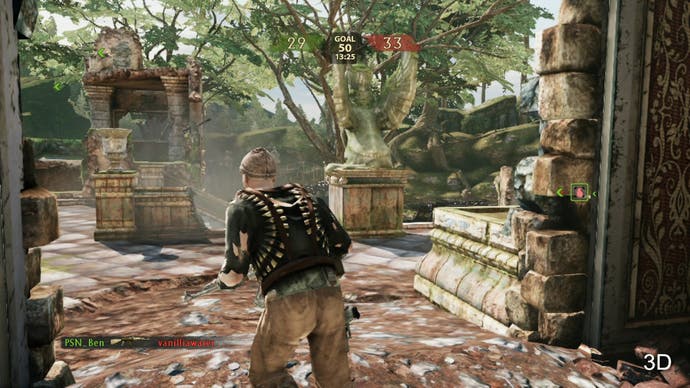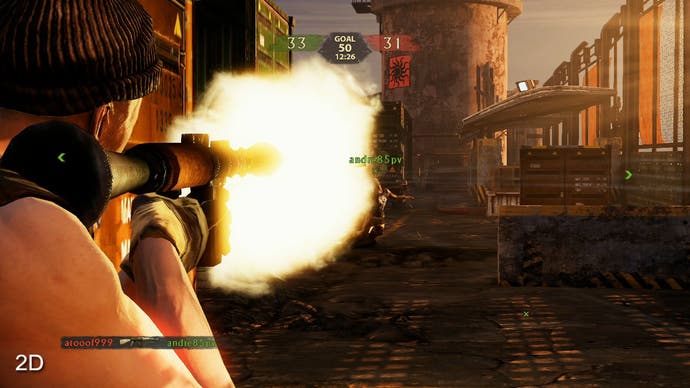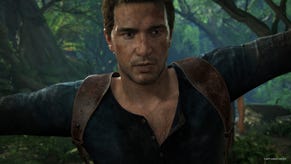Tech Analysis: Uncharted 3 Multiplayer Beta
Drake a closer look.
The make-up of the split-screen itself is curious. There's around 838x358's worth of resolution per player, meaning that the viewpoint is actually rather wider than the traditional widescreen aspect ratio of the standard game (around 2.33:1 vs. 1.77:1). Of course, there are drawbacks aside from the resolution deficit, most notably in terms of the level of detail - less complex models are employed for the characters and surroundings. However, the fact that the player window is physically smaller than usual helps mitigate the impact of this somewhat and where the game really succeeds is in the overall coherency of the world.
From what we've seen so far, there are no real issues with geometry pop-in and texture streaming, and movement between LODs is mostly unnoticeable. In other words, most of the issues we had with the Killzone 3 split-screen don't appear to be a real problem with Naughty Dog's Uncharted 3 implementation.
However, while the game is a visual treat in two-player mode, it does come at a cost - the frame-rate is rather inconsistent, ranging from anything between 20 to 30 frames per second, and probably averaging out between the two across the run of play. It's still very playable but the fact is that control feels tangibly less responsive compared to playing the game on your own.
As you might expect, the addition of split-screen to the Uncharted engine is also a key element that makes stereoscopic 3D possible. The principles between 3D and split-screen share much in common after all: both require independent viewpoints to be rendered at the same time. Uncharted 3 uses the standard HDMI 1.4 protocol in that the PlayStation transmits a 1280x1470 framebuffer to the 3DTV (two 720p images, one per eye, with 30 "blanking" lines between them) but similar to Killzone 3, there are a number of compromises.
First up, there's the basic matter of resolution. From what we can see, resolution appears to be fixed at 896x504 per eye. This is 49 per cent of the pixel load of a full 720p framebuffer, so similar in terms of fill-rate to the half-720p per eye we saw in Killzone 3. However, Naughty Dog's approach cuts down on upscaled edge-aliasing to a certain extent because pixels remain square rather than rectangular as they were in Guerrilla's horizontally scaled 3D mode. Scaling is also carried out in software, as opposed to using RSX's hardware scaler, which seems to produce a higher-quality result. HUD overlays are rendered in native 720p for both eyes, so these persistent on-screen elements aren't compromised by upscaling in the way they were in Killzone 3.
On this page and the next you'll find individual frame-rate analyses for each of the two levels currently available in the multiplayer beta. The Cinema option proved to be as invaluable as the Replay Theatre in Gran Turismo 5 in that it allows us to record gameplay and play it back in both 2D and 3D modes, giving us an unparalleled method of comparison - we're seeing the exact same action being rendered in both display modes.
Generally speaking, the 3D mode manages to stick very, very closely to 30 frames per second with only certain sections causing performance issues. Also interesting is that the rare areas of the 2D game that do see the code frame-out see a slightly exaggerated performance hit in 3D. Par for the course perhaps, but it's not a real issue during the run of play.
The overall perception we have from playing Uncharted 3 in three dimensions is that the game still feels good, running very smoothly indeed - tangibly smoother than the split-screen mode. Bearing in mind that this is a true stereoscopic 3D implementation - as opposed to one view reprojected to give the illusion of depth a la Crysis 2 - it's a remarkable technical achievement.




So how do they do it? The 896x504 resolution explains away one of the challenges of rendering in 3D: the res reduction means that RSX doesn't need to "paint" any more pixels than the conventional 2D mode. However, the game still needs to independently render the perspective of each eye, meaning that geometry needs to be processed twice. Thankfully, the work Naughty Dog carried out for split-screen mode proves to be equally valuable here, as the team has nipped and tucked at character models and environmental detail in order to reduce the vertex-processing overhead.
Bearing in mind that the exact same action is being rendered in both 2D and 3D modes, you might wonder why we've adopted a split-screen approach for our performance analysis videos (with our GT5 720p/1080p/3D head-to-heads, we simply used the standard 720p video as the main feed). Well, the purpose here is to give some idea of the compromises Naughty Dog has made in order to make stereo 3D work at an acceptable frame-rate. In a static screenshot comparison, the lower-LOD player models and missing level elements do stick out somewhat, but during the run of play it's remarkable how close 3D mode looks to the standard 2D game - and that's obviously not factoring in the benefits you get from playing with a true stereoscopic viewpoint. Similar to the split-screen mode, the overall sense of consistency is excellent too - there's no texture pop-in that we could see, and no sudden jumps between LOD models.








